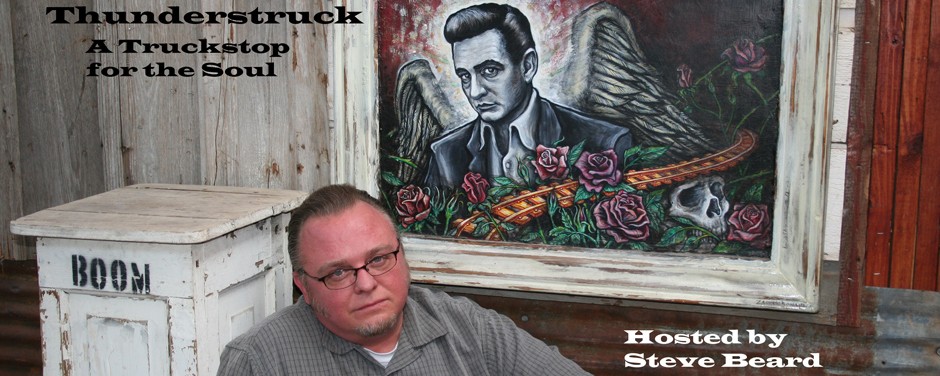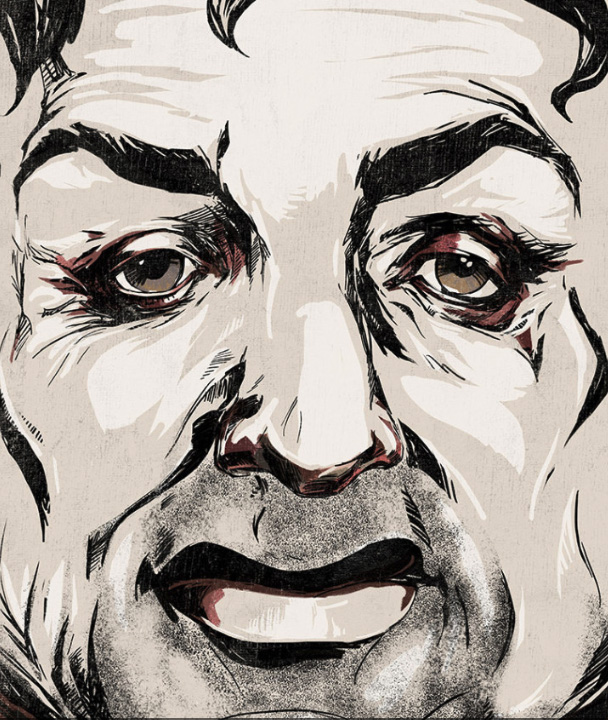By Steve Beard
I was 12 years old when I first saw Rocky. Thirty years ago, the film made such a deep impression on me that I actually arose early one morning and guzzled the raw egg concoction that Rocky drank while training. Before I could get out the door to jog around the block, I threw up. That was the last time that I sipped from the dreadful cup, but I never forgot the values of the film—pride, determination, and faith.
The recently released Rocky Balboa is the final installment in one of the most successful film franchises in Hollywood history. Inspired by the Muhammad Ali-Chuck Wepner fight in 1975 and with $106 in the bank, screenwriter and actor Sylvester Stallone created an Academy Award-winning cultural icon stitched together from blood, sweat, and a black eye. Rocky rose above his circumstances and proved he was not “just another bum from the neighborhood.”
The films had nothing to do with winning or losing. They had everything to do with getting back up on your feet after getting punched in the face. The films were tutorials on respect—for yourself, your opponent, and the opportunities that life presents.
Although he does not take home the championship belt in the original film, Rocky walks out of the ring with his pride, reputation, dignity, and honor. He is the classic portrait of the head-held-high underdog.
In each film, Rocky takes on an antagonist such as Thunderlips, Clubber Lang, Ivan Drago, and most recently Mason “The Line” Dixon. He is always proving to himself that he can still lace up the gloves. When life gets rough, he climbs back in the ring. When his manager dies, he climbs back in. When his wife falls into a coma, he climbs back in. When he loses all his money, he climbs back in.
This is Stallone’s swan song in the ring. Make no mistake about it, Rocky Balboa is not a stinker like Rocky 5. Stallone is well aware that viewers are apprehensive about seeing an embarrassing conclusion to a beloved character. Stallone deals with the concern through the dialogue of his on-screen son played by Milo Ventimiglia. His son’s awkward uncertainty is the way any son would feel about his father facing a potential public embarrassment. Stallone treats the understandable skepticism with well-allocated humor.
The film is a respectful, even spiritual, reminder of the Italian Stallion’s humble beginnings. Flashbacks from the original Rocky are well placed throughout the film. Pauley is back at his side, Adrian is tenderly honored after her death, and Rocky is back pounding a side of beef in the meat packing plant.
Rocky, however, is reminded that he is “living backwards” in the fanfare of the past, as well as being hamstrung by the sentimental memories of Adrian, his beloved. Unexpectedly provocative and entertaining, Rocky Balboa is as much about growing old on your own terms as it is about any of the other virtues in the film such as tenacity, humility, self-confidence, and love.
After the fight, the hot-shot reigning world champion says to Balboa, “You’re one crazy old man.” Rocky deadpans, “You’ll get there.”
In promoting his latest project, Stallone has been emphasizing the spiritual journey of his prized character. The opening shot of the original Rocky is a picture of Jesus. Since they were filming in a chapel-turned-gym, the camera slowly moves from the face of Christ to the rafters and finally to Rocky’s face. “As he’s being hit, with the picture in the background, you know that the man was being chosen for a spiritual journey, like I was,” Stallone says. Despite his violent line of work, Rocky was humble, respectful, and self-sacrificing.
Stallone wanted Rocky Balboa to “say something about how I’d been sort of wayward and lost and how would I get on my feet again.” He wanted Rocky to reflect the kind of dramatic ups and downs that he faced in his own life. Stallone is honest about Hollywood’s seduction.
“It’s a very, very morally weakening situation because you are given the keys to a candy store,” Stallone confesses. “People will say yes to you when you’re wrong. Your morals, and your outlook on life, are corrupted. You actually start to believe your hype. And when that starts to happen, you just want to surround yourself with people who will never tell you the truth and will only tell you what you want to hear.” Stallone confesses that it was when he gave in to these landmines of fame that his career took a downward spiral.
“Everything that I’ve done that has been bad deserved to fail because it had no spiritual message—nothing,” Stallone candidly admits. And he has been in some stinkers. As life often imitates art, Stallone’s career often mirrored his personal life. He admits to giving into “the lackadaisical, irresponsible, immature lifestyle that a lot of stars live.” Having hit rock bottom after the failure of his second marriage and the stagnation of his career, he looked hard for a moral compass and tried to point it in the right direction.
Stallone had been raised in a religious home and attended Catholic schools. “I was taught the faith and went as far as I could with it,” he says. “Until one day, I got out in the so-called real world and I was presented with temptation. I lost my way and made a lot of bad choices.”
Ironically, his catapulted career proved to be counterproductive in his search for happiness and purpose. “After you’ve been knocked down a few times, and the world has shown you its dark side, you kind of realize that you need light, you need guidance, you need God’s word, you need spiritual help,” he says. “And that’s when your journey will begin.”
Stallone testifies that his faith has given him peace—a valuable commodity in Hollywood. “The more I go to church, and the more I turn myself over to the process of believing in Jesus and listening to his Word and having him guide my hand, I feel as though the pressure is off me now,” he says.
At the same time, Stallone is still making his appeal to relevancy to a new generation. Even though the notion of a 60-year-old man climbing back into the ring for one more fight sounds absurd, one need only see Stallone’s chiseled physique to realize that it might not be a far-flung stretch of the imagination. He is packing muscle and swinging like a welterweight.
“An artist dies twice, and the second death is the easiest one,” Stallone told the New York Times regarding his career’s ebbs and flows. “The artistic death, the fact that you are no longer pertinent—or that you’re deemed someone whose message or talent has run its course—is a very tough piece of information to swallow.”
I’m not sure he has to worry about that just yet. When Stallone walked out onto the sidelines of Lincoln Financial Field during a recent Monday Night Football game in Philadelphia, the 60,000 fans in the stadium began chanting, “Rocky! Rocky! Rocky!” His character is etched in the soul of that city. There is an eight-and-a-half foot statue of Rocky outside of the Museum of Art—the site of one of the most memorable scenes in film history. Who can forget Rocky climbing up the seventy-two steps of the museum and raising his arms victoriously? In tribute, the footage during the closing credits of Rocky Balboa shows people of all shapes, ages, and ethnicities climbing the steps.
When I was a child, my family lived a few blocks from those steps. The site has become such a landmark that Pulitzer-prize winning reporter Michael Vitez and photographer Tom Gralish produced Rocky Stories: Tales of Love, Hope, and Happiness at America’s Most Famous Steps to chronicle those who climb the steps and strike the Rocky pose. They come from all kind of circumstances: a recovering drug addict, a track team from Belfast, a race car driver, professional wrestling fans from Australia, a struggling actress, a Turkish woman who overcame tremendous odds to attend the Wharton School of Business.
“I discovered many things at the Rocky Steps. People came to propose marriage,” writes Vitez. “Or because Rocky had given them hope and direction during troubled times in their lives. They came because they had overcome cancer or other trials and felt that they, like the movie character, had surmounted much in life.…The steps have become a place where people can bring to life the message of Rocky—that with hard work, faith, and support from people you love, you can accomplish almost anything. People are always happy at the steps. Running up and celebrating at the top offers a tonic to the world’s problems, if only for a moment.”
Not a bad gift. Thanks, Sly.
Steve Beard is the creator and editor of Thunderstruck Media Syndicate. This column originally appeared in the January/February 2007 issue of Risen Magazine.

